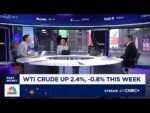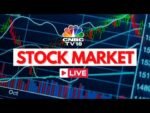FTSE 100
Chart
The FTSE 100 (pronounced “Footsie”) is an index of the top 100 publicly listed companies on the London Stock Exchange by size of market value (capitalisation). The term FTSE stands for Financial Times Stock Exchange, due to a previous joint venture between the LSE and the Financial Times. The index was first established in 1984 and currently consists of mainly international companies, meaning it can be considered a weak indicator of how the UK economy is performing.
You can invest in the FTSE 100 through a number of different ways. You can buy an index tracker usually in the form of an ETF (Exchange Traded Fund) that fully replicates the FTSE 100 and buys all 100 companies within the fund. This is a simple and cheap way to gain exposure to the entire index. The price of the fund will track the performance of the FTSE 100 on a continuous basis until you decide to sell the fund. Investors can also pick and choose different companies and sectors within the FTSE 100 to gain partial exposure to the market.
There are a few steps to begin investing. Luckily, it is usually straight forward and easy.
- Open a share trading account. There are many available to choose from, we have a selected a few here that you can choose from.
- Add funds to your account. You’ll need to add the money that you’re willing to invest via debit or credit card. Remember, this should never be more than you can afford to lose.
- Select the fund or share you wish to buy. Each share dealing platform varies, but there will be hundred or thousands to choose from. Be sure to do your research first!
- Buy and monitor. Once you’ve bought the fund, it’s then up to you to keep an eye on it and manage your account in the way you feel necessary. Remember that involving emotion can often lead to rash to decisions.
That’s it!
The bars in the above chart are known as candlesticks. Each candlestick represents the amount the FTSE 100 has moved in one trading day, with the bottom of the candlestick representing the lowest value of the index, and the top of the candlestick representing the highest.
There are a huge number of trackers available that investors can look to add to their portfolios. These are usually in the form of ETFs (Exchange Traded Funds) or Unit Trusts. These are usually relatively cheap to purchase and hold, although some vary depending on the fund’s strategy. Some ETFs will simply look to fully replicate all 100 holdings in the FTSE 100, and so are cheap as the manager does not need to do much work when managing the fund. Others, that perhaps use leverage or look at specific areas of the FTSE may be more expensive as they require more work to manage.
Here are a few examples that we’ve found, although many more can be found via investment platforms such as Hargreaves Lansdown, Interactive Investor, Vanguard and many more.





 META
META